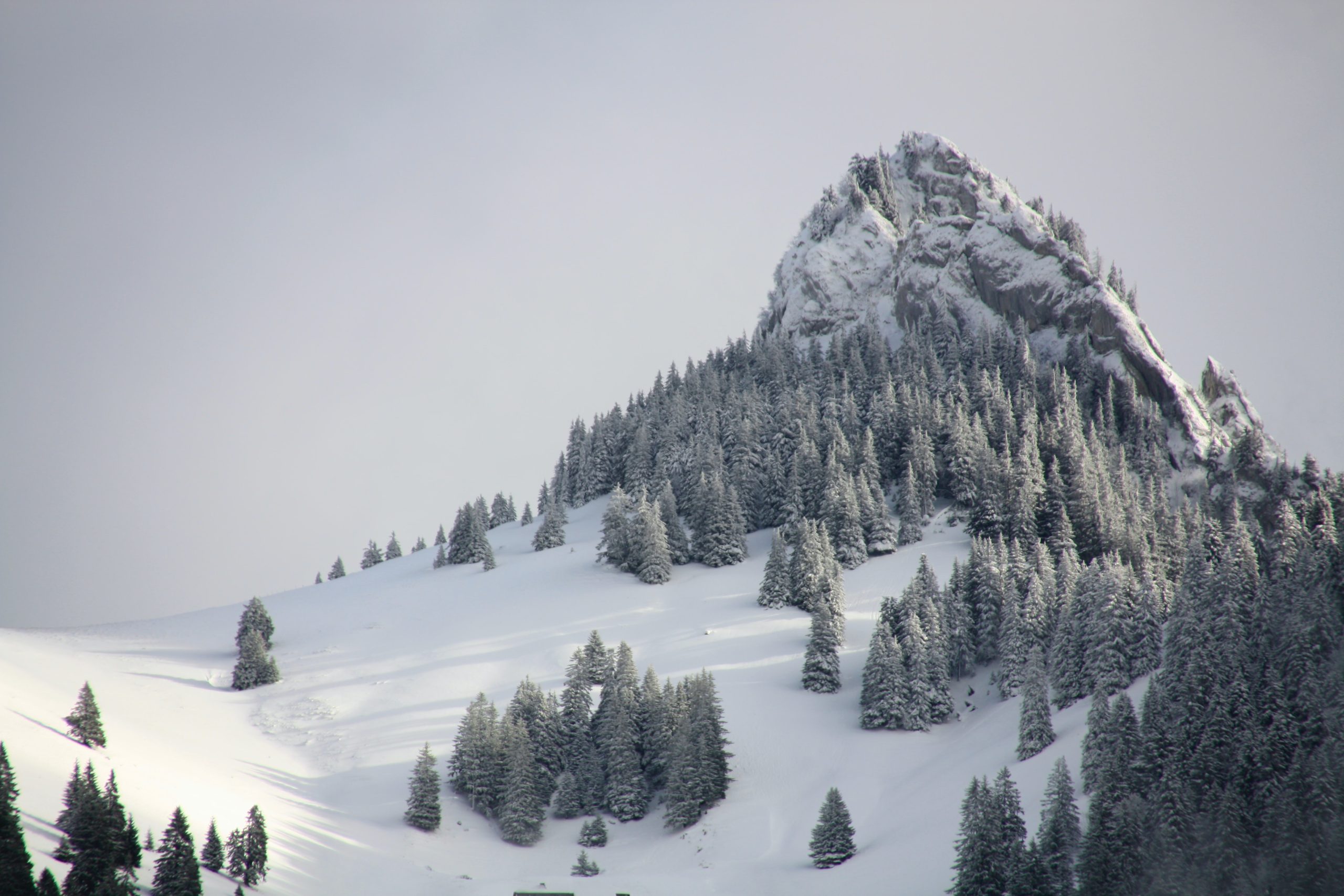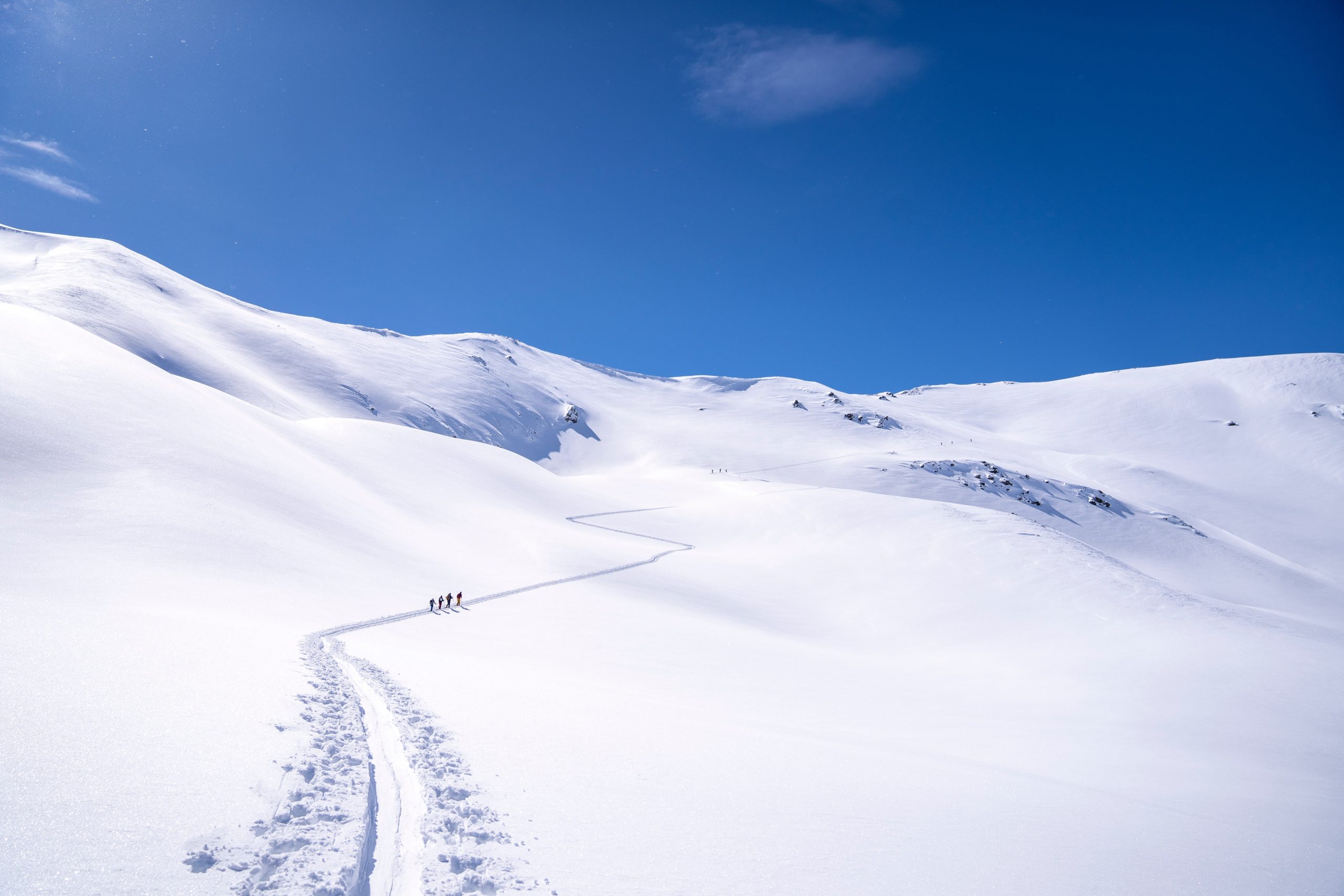
The Swiss Federal Institute for Snow and Avalanche Research (SLF) responded to requests to make its Avalanche Warning System more detailed by implementing a change in the way the warning system operates. They are pioneering a new path toward avalanche safety with a major change.
The five categories of danger remain the same:
1- Low
2- Moderate
3 – Considerable
4- High
5 – Very High
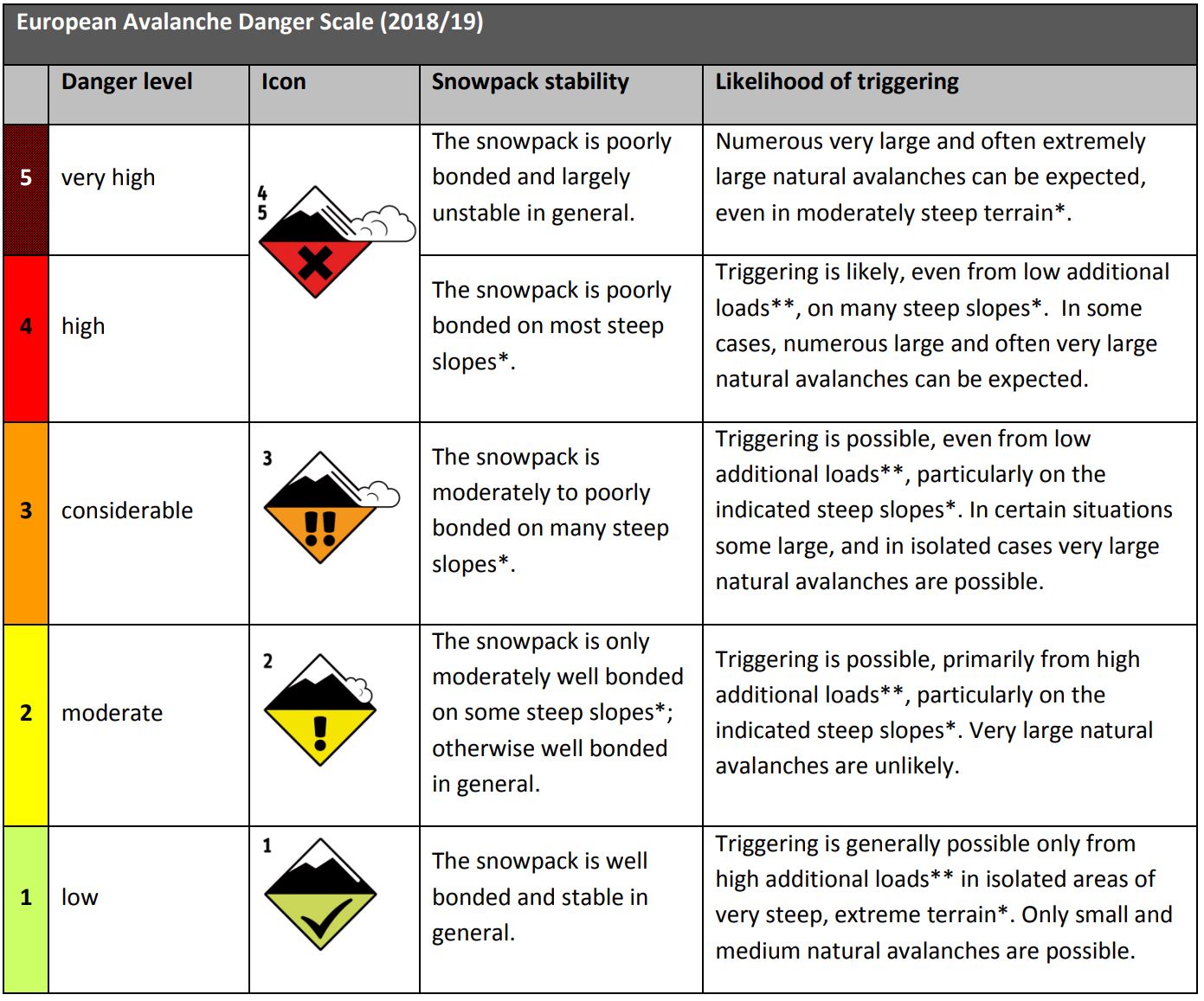
What has changed? They added subdivisions to more precisely report the danger level within levels 1-5:
(-) toward the bottom end of the danger level
(=) in the middle of the danger level
(+) on the high end of the danger level
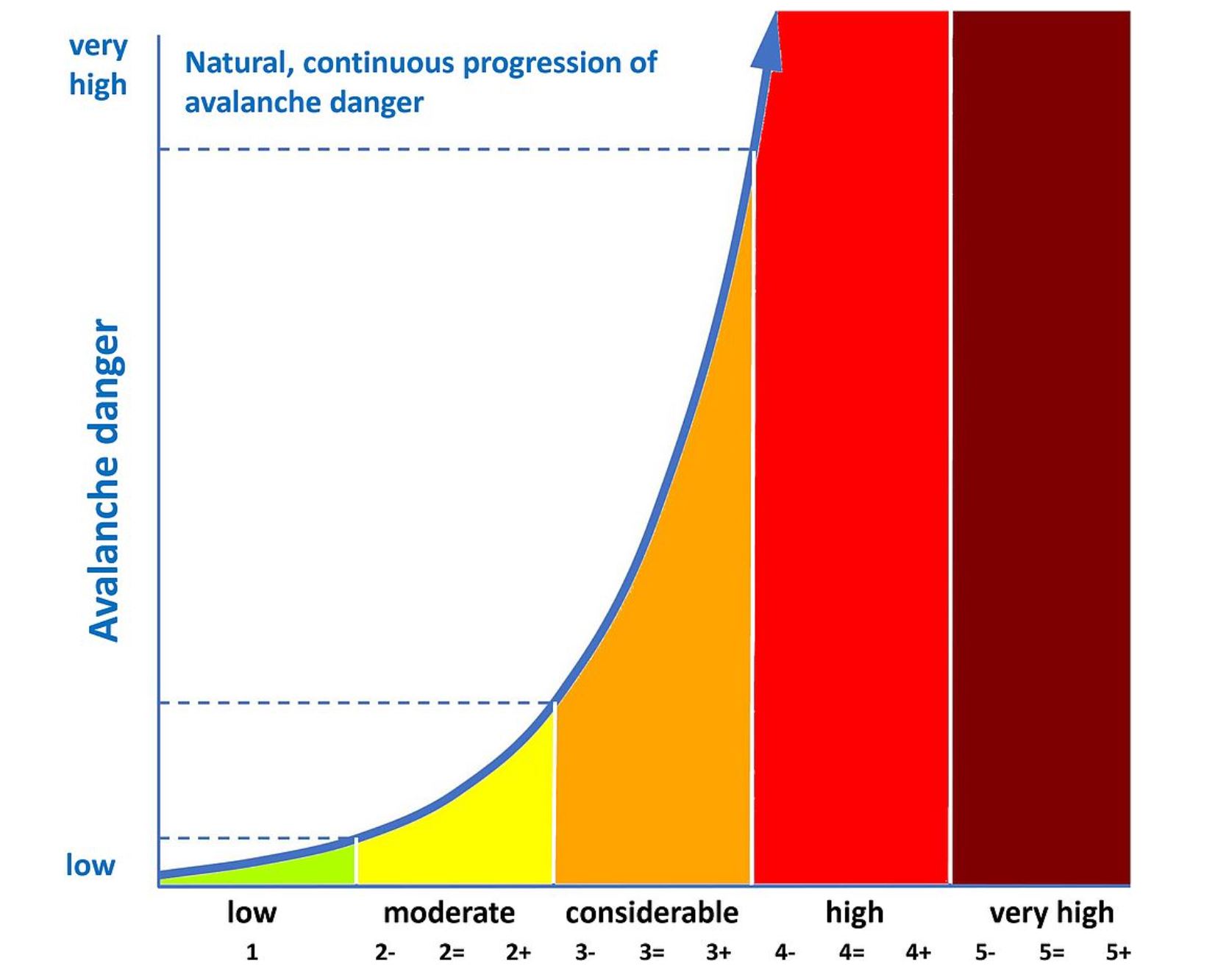
Subdivisions will be implemented only for dry avalanches (the leading avalanche that causes death) starting at Level 2, moderate danger, and above. Statistical evidence suggests that subdivisions are not useful or accurate for predicting wet avalanches.
Why make a change? Subdivisions will provide a more precise understanding of the danger level present. The 5 categories, especially Level 3, can span across a colossal variation of conditions. Knowing where the potential danger lands within the 5 levels can allow people to make a more educated decision before venturing into the backcountry.
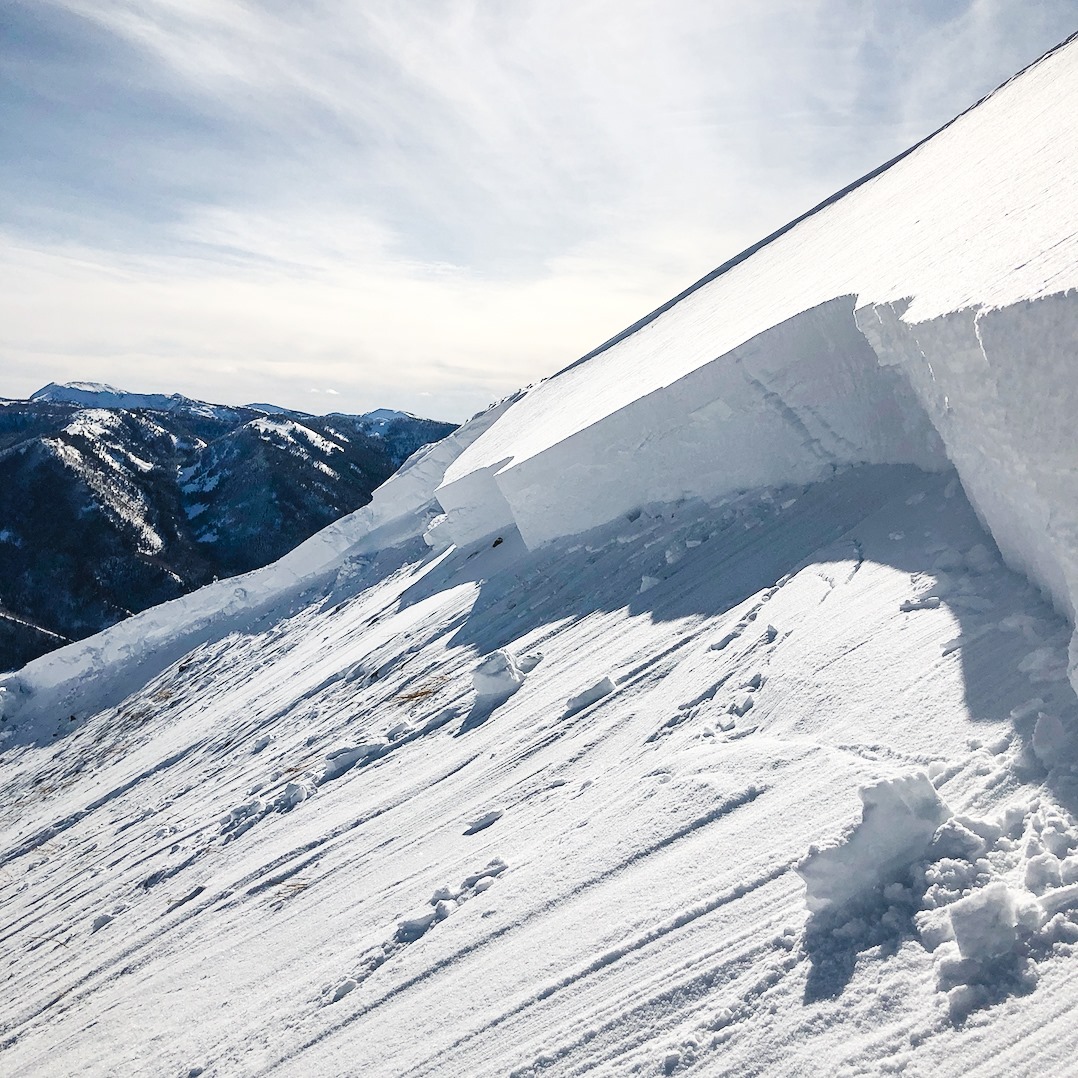
Why not add another danger level to break up the broadness of level 3? SLF decided against this due to psychological research. The human brain struggles to differentiate above 5-7 categories. Retaining the classification system to the low end of the scale, with only 5 categories, helps to prevent the possibility of misunderstandings or a blatant disregard for the avalanche warning system.
Will subdivision provide a positive outcome? The winter of 2022 is the first season of implementation of the new system; however, SLF has been using subdivisions (without publishing them) for 6 winters. They have found subdivisions to be informative and accurate, predicting that they will make a positive impact.
There could potentially be some negative impacts to consider. It is not a guarantee, but it should be considered that the (-) subdivision may provide people with false confidence. For example, a Level 3-minus remains a Level 3 and should not be thought of as a Level 2.
Should other countries follow in Switzerland’s footsteps? If this winter results in positive results from the new warning system then this change should certainly be considered by other countries. Any change that minimizes the devastating impact of avalanches should always be welcomed with open arms.
As always, stay safe and stay smart in the backcountry!
